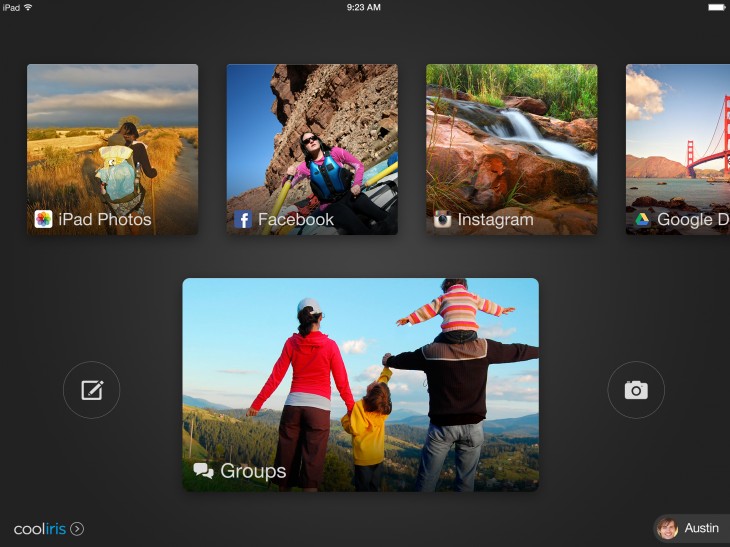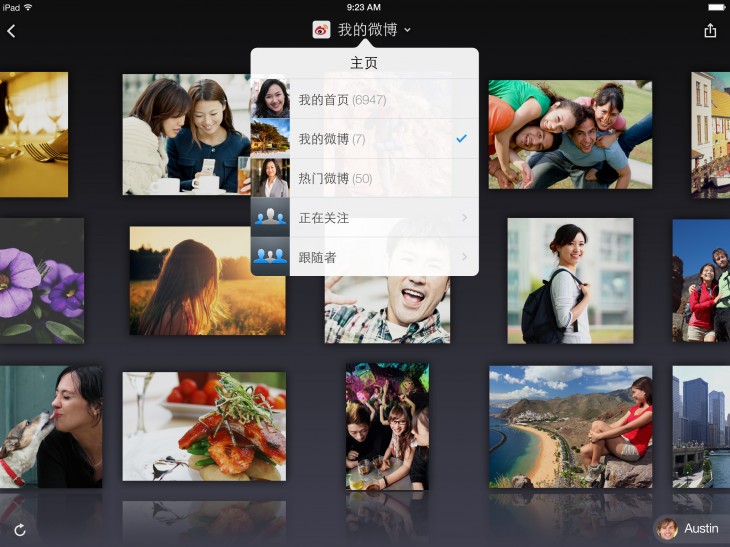
Pixels are the new decibels — that’s what Soujanya Bhumkar, the CEO and co-founder of US-based photo service Cooliris, is touting as the next wave of change in communication.
“We believe that as time progresses, text is going to go down. Snapchat is one example — a lot of the visual communication is going to happen through media,” Bhumkar tells TNW in a recent interview.
Cooliris wants to emphasize more on messaging
This is why Cooliris is moving beyond simply providing a platform to view photos from a multitude of sources. It is now zooming in on boosting its group messaging function as it seeks to become what can be understood as a media hub with an added layer of personalized texting in groups.
Cooliris has rolled out new group interactions today via an app update that enable collaborative sharing and conversations around the media you access on its platform.
Essentially this means that Cooliris is trying to add another form of communication for consumers on top of the existing messaging apps and social networks. It wants to be the hub where media takes centerstage and conversations happen around the media.
Other than the fact that the group function is now front and center in the app, Cooliris users can also create private groups more easily by simply tapping on the profiles, erasing the need to type out the entire contact information. “This fast-chat style conversation around media elevates the experience to a highly personalized level,” Cooliris notes.
Solving the problem of fragmented media
Bhumkar tells TNW that he realized the modern mobile consumer has media fragmented not only across multiple devices, but also services. He explains:
This means you now have some media on Facebook, some on Instagram, some on your camera roll, some in Google Drive, somebody may have shared something to you via Dropbox, you may have some blog on Tumblr.
So the things that are relevant to you – you don’t actually find them all in one service. It’s like fragmented across services as well. And that’s why we let you connect to the services and bring them all together.
The photo function is what Cooliris has always been focusing on. It takes a more modern look at viewing photos and imports them from a multitude of sources, solving the problem of an individual’s fragmented photo-viewing experience. However, Bhumkar is keen to take this further.
He explains that there is a fragmentation of relevant media across people who are near and dear to you — something which social networks can’t solve, because they introduce the presence of acquaintances into the online environment. For example, Facebook is not somewhere you can put a whole bunch of photos up — as it is more superficial.
Co-existing with messaging apps
Now, you may ask: what about messaging apps? Bhumkar explains that currently messaging apps are “notorious for not being very media-centric.” Ever tried sending a bunch of photos across WhatsApp or Line? They appear individually as “messages” which you have to download into your camera roll — not a very efficient way of sharing media.
“The trend shows that people are sending small bits of information back and forth, so we said: we are really building and looking at it as a complete media hub. So our approach is less about messaging and social networks: we are approaching it as a media hub,” Bhumkar says.
This means that Cooliris isn’t meant to replace messaging apps or social networks — instead it wants to be another communication option when media becomes the focal point of conversation.
The latest update to Cooliris also introduces more personalization options and rolls out a new home screen with custom backgrounds. There is also a slideshow mode to let users automatically play any of their photos from any service in the 3D Wall.
Integration with China’s Sina Weibo
Cooliris has also announced a new partnership with China’s Twitter-like microblogging platform Sina Weibo today, making it the 20th media source that can be connected to the app. This means that users can access their Sina Weibo content in the Cooliris 3D Wall, and furthermore can simply tap the Sina Weibo username in the metadata to pivot to new walls of content from different users, and follow new people from within the app.
The Sina Weibo partnership comes shortly after it inked a partnership with Chinese search giant Baidu, marking its commitment to deepen its presence in the world’s largest smartphone market.
As Cooliris strives to evolve beyond just a photo-viewing service, its proposition to be an app that combines media and messaging is a pretty convincing one — I can see it existing alongside my typical messaging apps and social networks, as a place where I can share private photos and talk about them with my friends in a closed group. Whether it will gain traction though, considering the number of apps we already use on a daily basis to socialize with one another, is something that is worth keeping an eye out for.
➤ Cooliris | iOS
Headline image via Shutterstock
Disclosure: This article contains an affiliate link. While we only ever write about products we think deserve to be on the pages of our site, The Next Web may earn a small commission if you click through and buy the product in question.
Get the TNW newsletter
Get the most important tech news in your inbox each week.






